YMatrix also provides a self-developed exporter, which can be perfectly connected to the Prometheus monitoring ecosystem.
It should be noted that YMatrix's exporter and corresponding Dashboard only contains monitoring of the database itself and do not include monitoring of the operating system metrics. Operating system-related metric monitoring requires additional exporter support, such as node_exporter. The module layout is as follows:
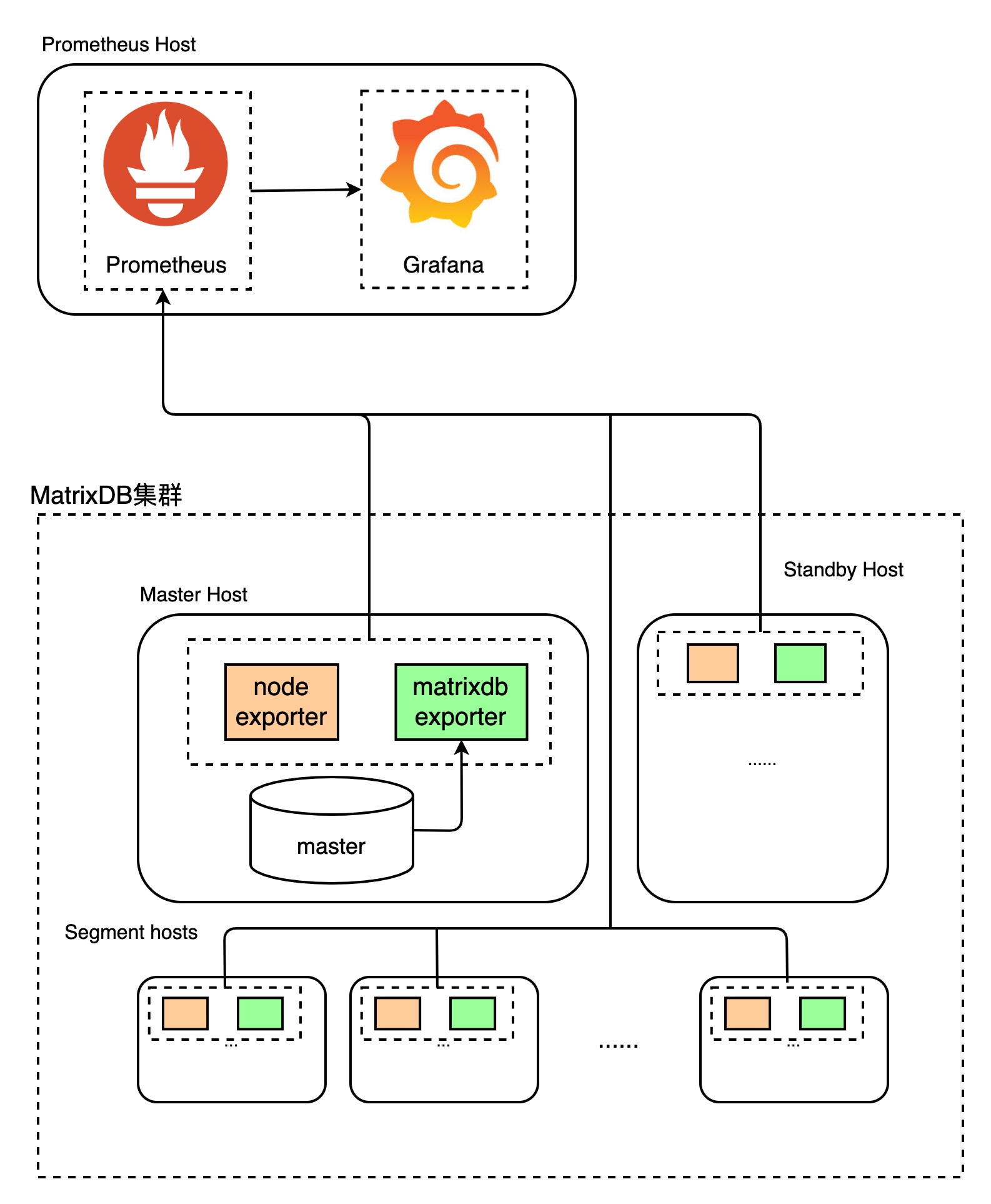
YMatrix exporter is included in the YMatrix installation package and can be used with activation. Then install and deploy node_exporter, Grafana, Prometheus.
createdb matrixmgr;
psql -d matrixmgrmatrixmgr=# CREATE EXTENSION matrixts; matrixmgr=# CREATE EXTENSION matrixmgr;
matrixmgr=# SELECT mxmgr_init_exporter();
After success, you can observe that a new pattern called "exporter" appears under the matrixmgr database. Tables and views in this mode contains cluster monitoring and configuration information. Do not change the definitions and contents of these tables and views by yourself.
This command starts matrixdb_exporter on all machines in the cluster.
> ***Note!***
If the cluster has started the old monitoring system, it is necessary to shut down the old monitoring system first, otherwise it will fail.
Close method: SELECT mxmgr_remove_all('local');
### 1.2 node_exporter installation and configuration
node_exporter is used to monitor operating system-related metrics. Download the latest version of [node_exporter](https://prometheus.io/download/) from the official website. Here we take 1.3.1 as an example (using root user operation).tar -xvf node_exporter-1.3.1.linux-amd64.tar.gz -C /usr/local
ln -s /usr/local/node_exporter-1.3.1.linux-amd64/ /usr/local/node_exporter
cat << EOF > /usr/lib/systemd/system/node_exporter.service [Service] User=root Group=root ExecStart=/usr/local/node_exporter/node_exporter
[Install] WantedBy=multi-user.target
[Unit] Description=node_exporter After=network.target
EOF
systemctl start node_exporter systemctl status node_exporter systemctl enable node_exporter
> ***Note!***
node_exporter needs to be deployed on all hosts of the cluster, so the above steps must be performed on all hosts of the cluster.
### 1.3 Prometheus installation and configuration
Prepare a host that can access all host exporter ports of the cluster, which can be a Master or Standby Master node, or a separate machine (all for Linux, MacOS, Windows, etc.).
Install the latest version of Prometheus. The official download and installation link is [https://prometheus.io/download/](https://prometheus.io/download/).
The following commands describe the operation method using CentOS 7 as an example. For commands for other operating systems, please refer to the corresponding operating system usage guide.
* **Download and install Prometheus (requires root permission)**
> ***Notes!***
During the installation of Prometheus, you can choose whether to install the mxgate monitoring interface. The following example holds the mxgate monitoring installation code. If it is not installed, delete the code. See the sample code comment for details.
<a name="systemd"><br/></a>tar -xf ./prometheus-2.36.1.linux-amd64.tar.gz -C /usr/local ln -s /usr/local/prometheus-2.36.1.linux-amd64/ /usr/local/prometheus
useradd -s /sbin/nologin -M prometheus
mkdir /data/prometheus -p
chown -R prometheus:prometheus /usr/local/prometheus/ chown -R prometheus:prometheus /data/prometheus/
cat << EOF > /etc/systemd/system/prometheus.service [Unit] Description=Prometheus Documentation=https://prometheus.io/ After=network.target [Service] Type=simple User=prometheus ExecStart=/usr/local/prometheus/prometheus --config.file=/usr/local/prometheus/prometheus.yml --storage.tsdb.path=/data/prometheus Restart=on-failure [Install] WantedBy=multi-user.target EOF
scrape_configs:
scrape_configs:
systemctl start prometheus systemctl status prometheus systemctl enable prometheus
After startup, you can access the WebUI through the UI interface provided by Prometheus and view the running status, `http://IP:9090/`Select Status->Targets in the Prometheus main panel
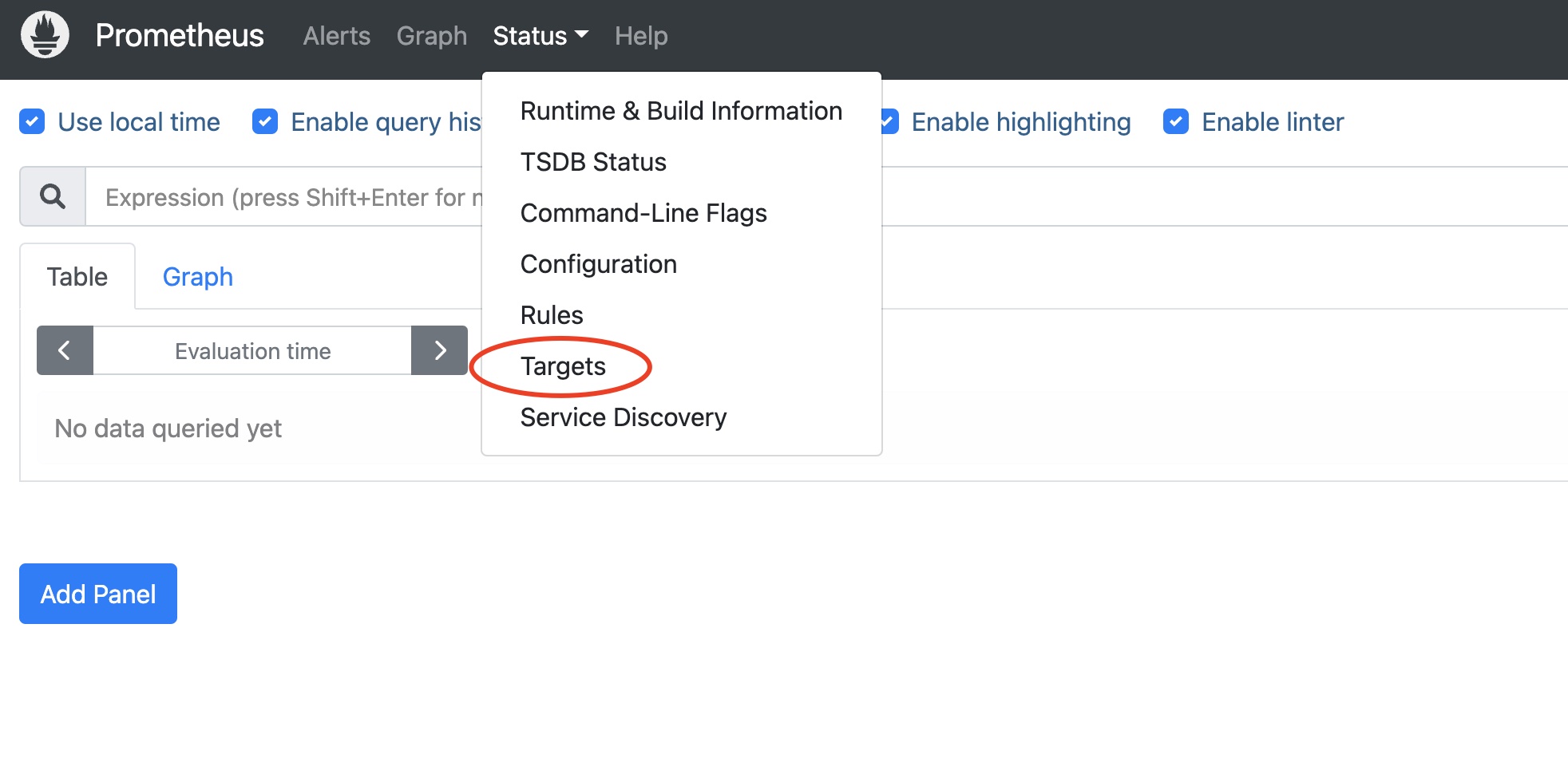
You will see that the newly configured matrixdb_exporter and node_exporter and Prometheus' own exporter status are all UP, indicating that the monitoring deployment is successful.

Prometheus is used to store monitoring data, and Grafana pulls monitoring data from Prometheus and displays it. Just like installing Prometheus, prepare a machine that can access Prometheus (Grafana and Prometheus can be installed on the same machine).
It should be noted that the Grafana version cannot be lower than 8.0.0, and the latest version is recommended. The official download and installation link is https://grafana.com/grafana/download.
The following commands describe the operation method using CentOS 7 as an example. For commands for other operating systems, please refer to the corresponding operating system usage guide (requires the root user operation).
wget https://dl.grafana.com/enterprise/release/grafana-enterprise-8.5.5-1.x86_64.rpm
yum install grafana-enterprise-8.5.5-1.x86_64.rpmsudo systemctl daemon-reload
sudo systemctl start grafana-server
sudo systemctl status grafana-server
sudo systemctl enable grafana-serverAfter the installation is complete, use the browser to access the host's port 3000:
http://<安装节点的IP或者域名>:3000You can see the Grafana homepage. Log in with the default username and password (admin/admin). To ensure security, please change your password yourself.
After the installation and deployment of exporter, Prometheus, Grafana, you need to load the dashboard to display the monitoring chart.
Each dashboard depends on a data source, so first you need to add a data source:
Click the Settings button on the Grafana main interface and select Data Sources:
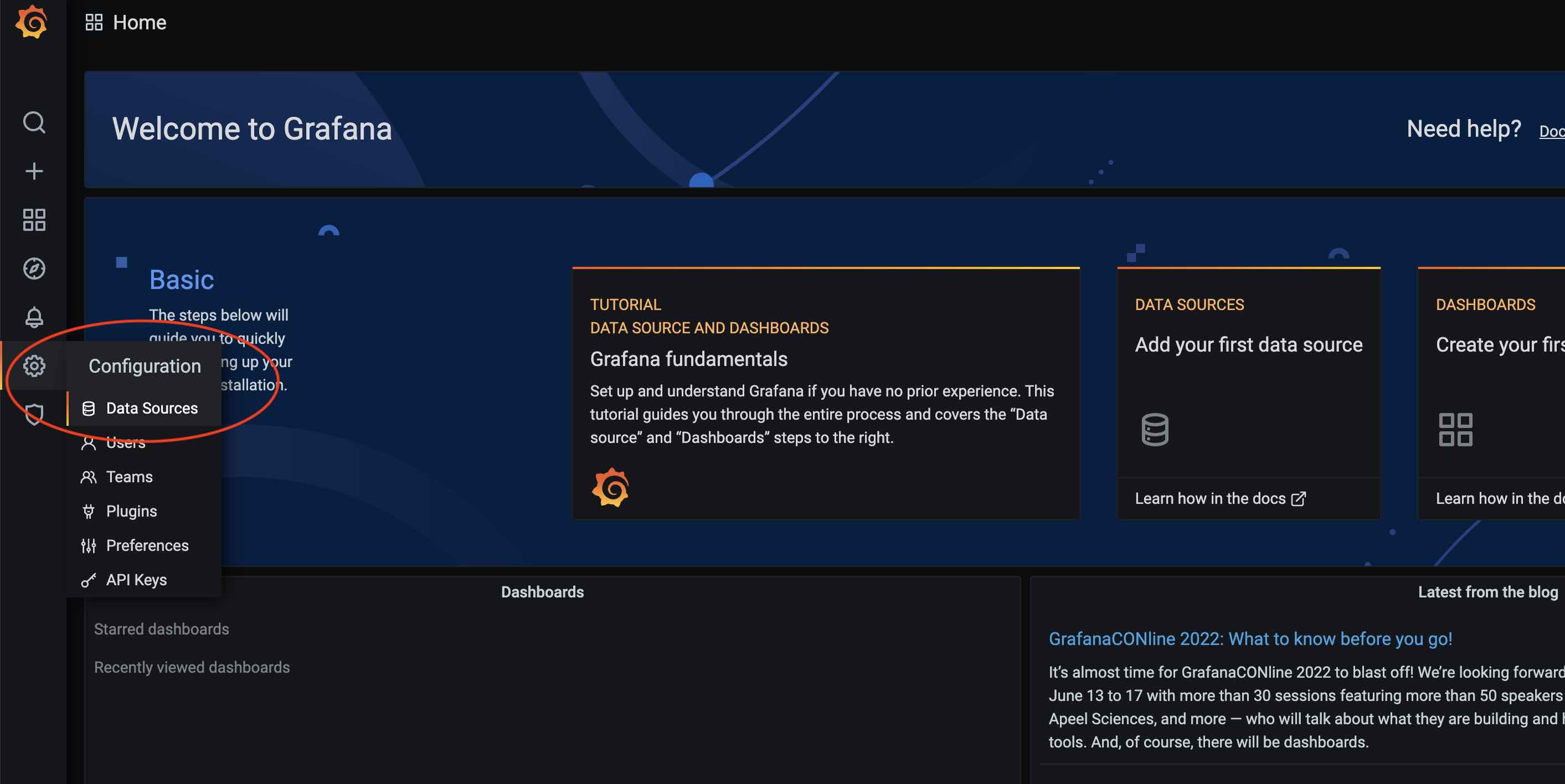
Then click Add data source:

Select Prometheus in the database category:
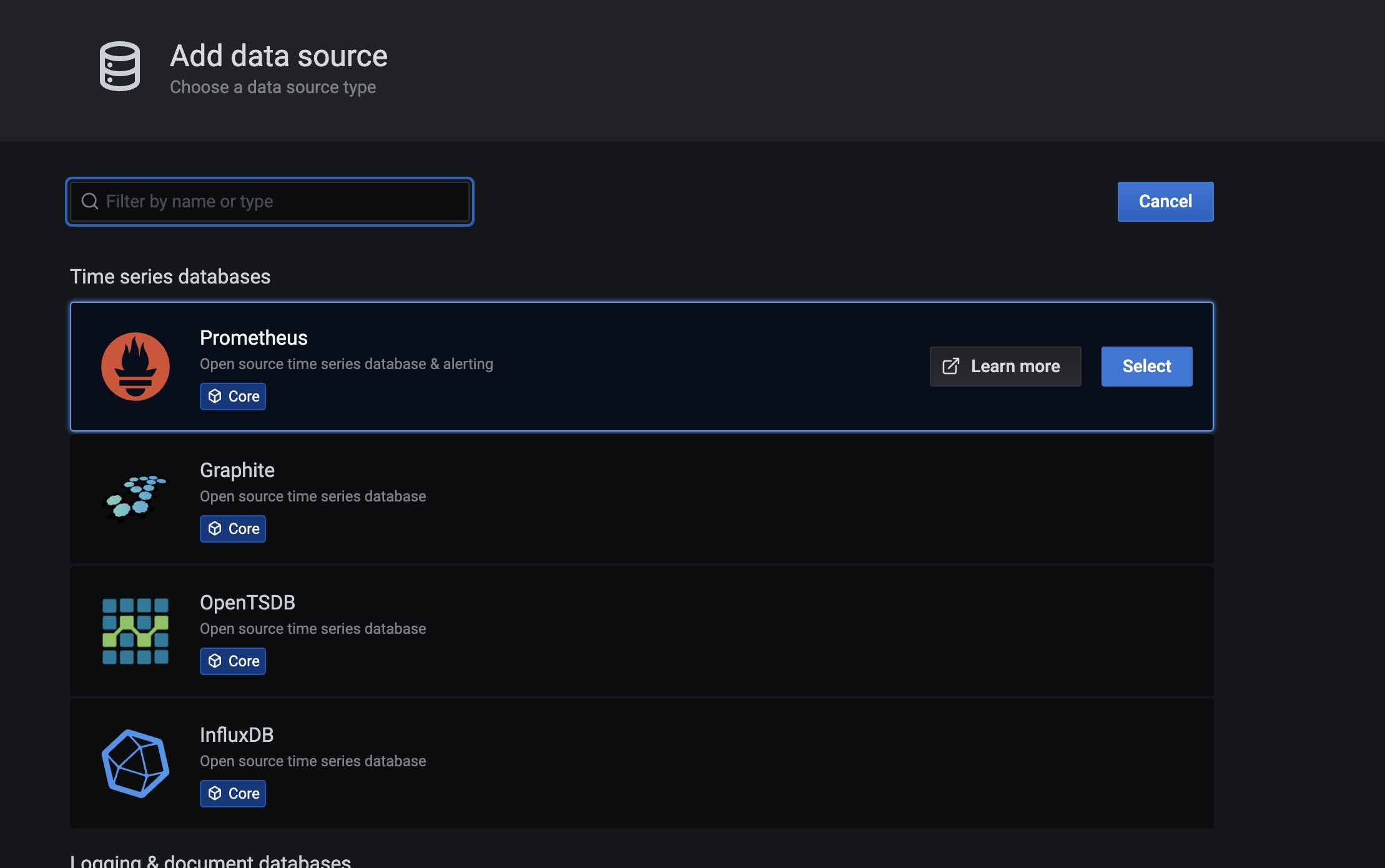
Give the data source a name in the data source name, such as: MatrixDB-Prometheus; then fill in the IP and port of Prometheus in the URL:
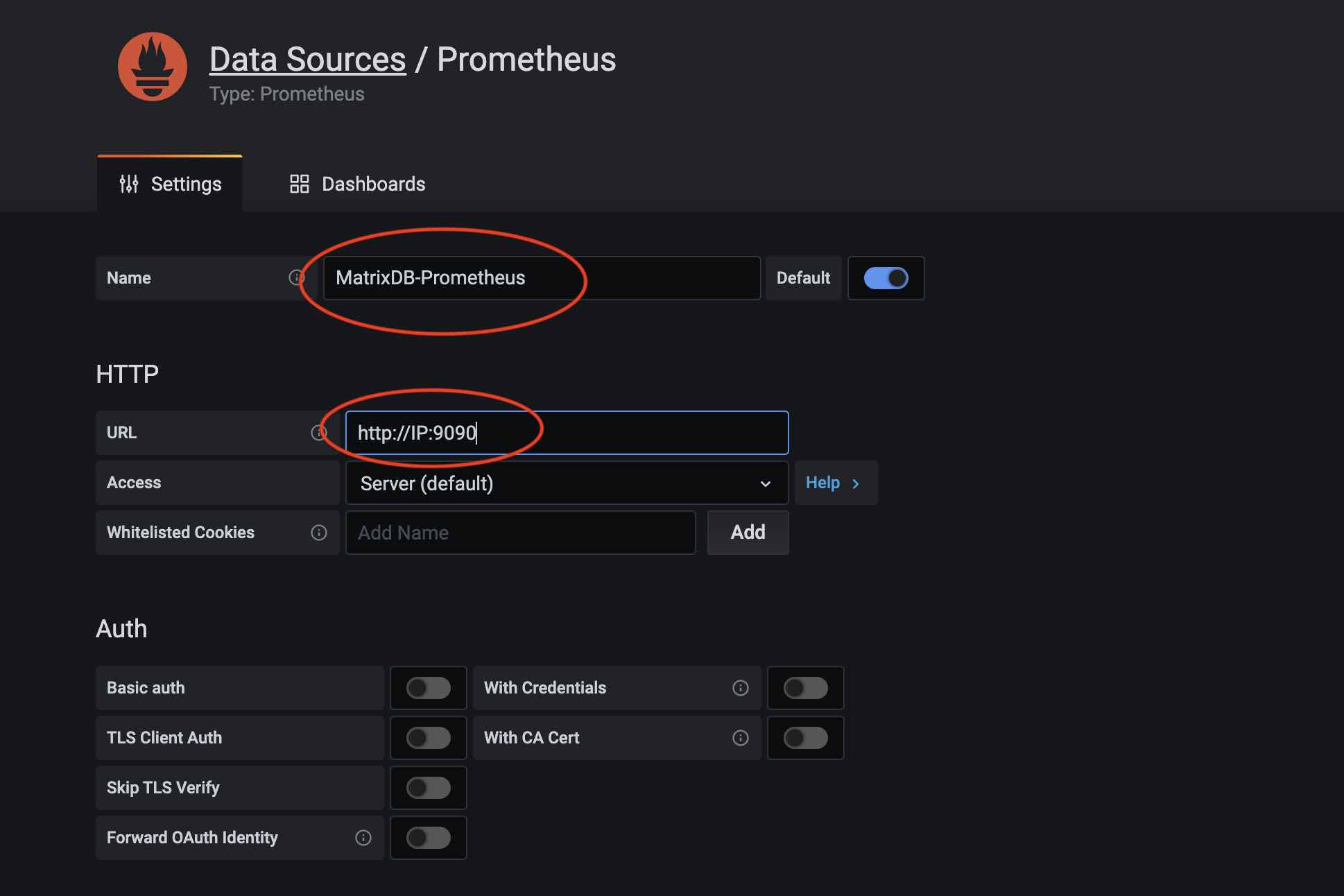
After the data source is added, the Dashboard is loaded below. Click the plus button on the Grafana main panel and select Import:
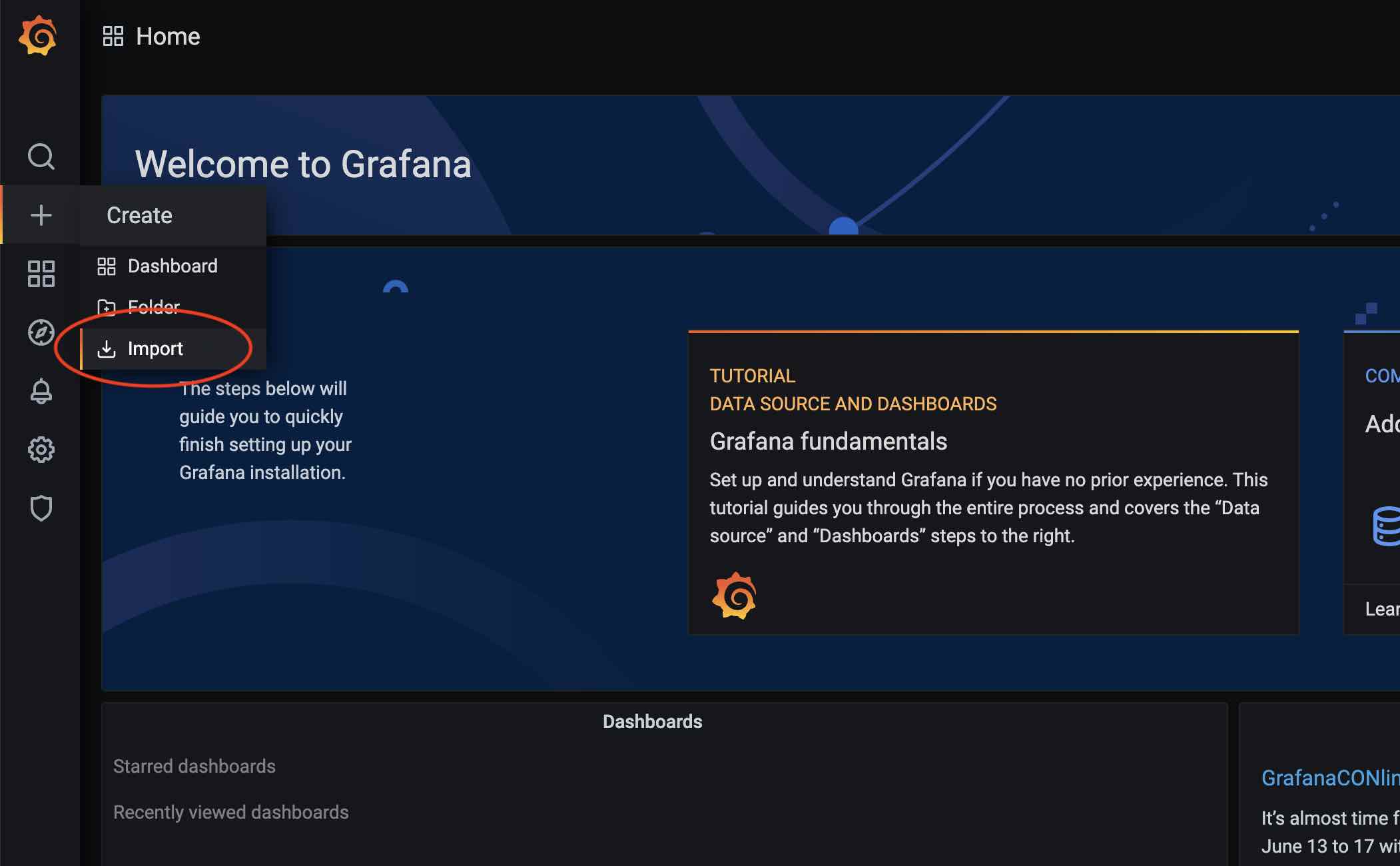
Import has several ways: official URL or ID, paste Json into a text box, load from a file. Here we choose to load the file from the Prometheus Dashboard of matrixdb in the installation directory $GPHOME/share/doc/postgresql/extension/PrometheusDashboard.json, to load the file:
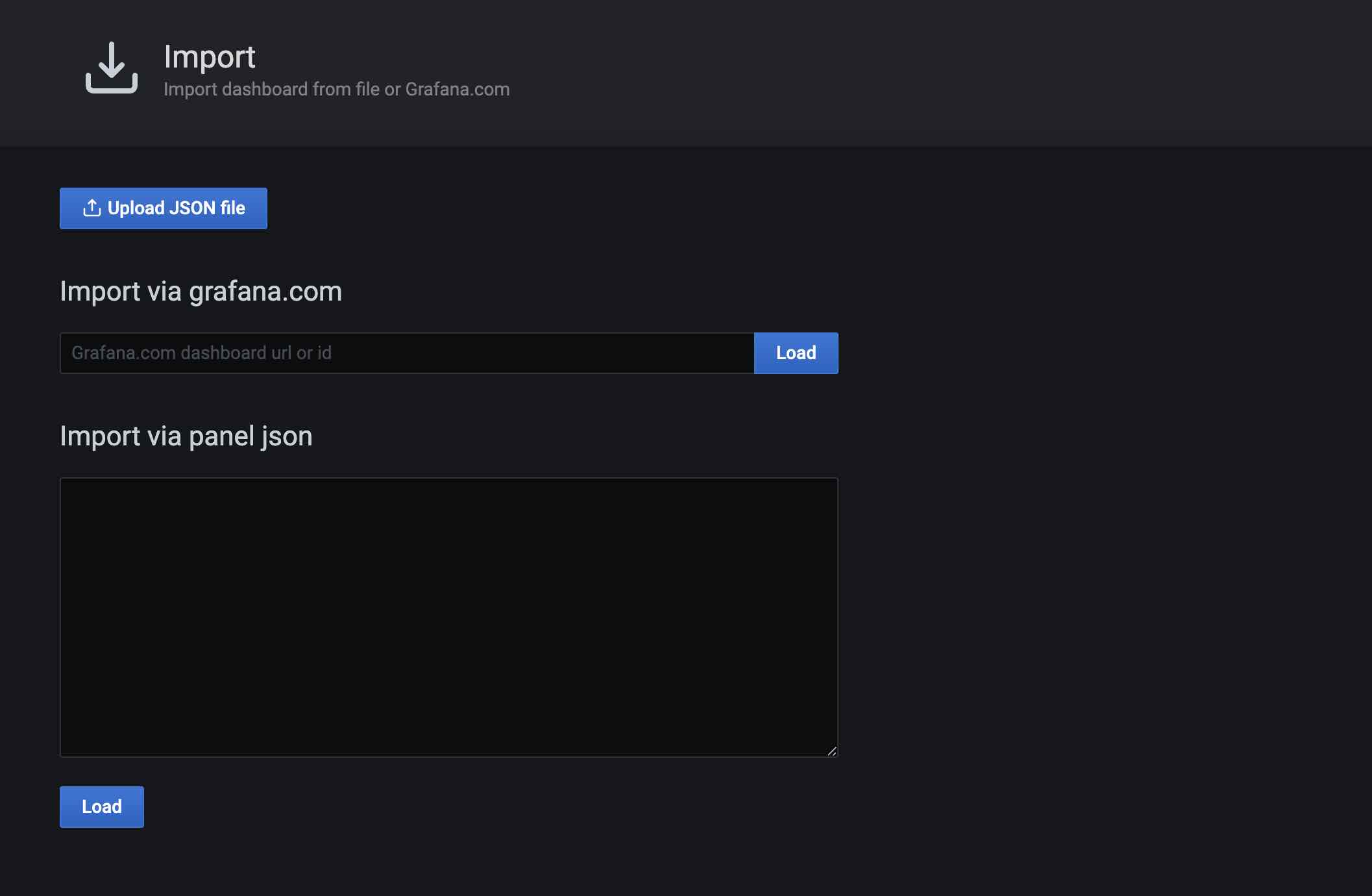
When loading the file, you need to select the Prometheus data source, and here you select the source you just created.
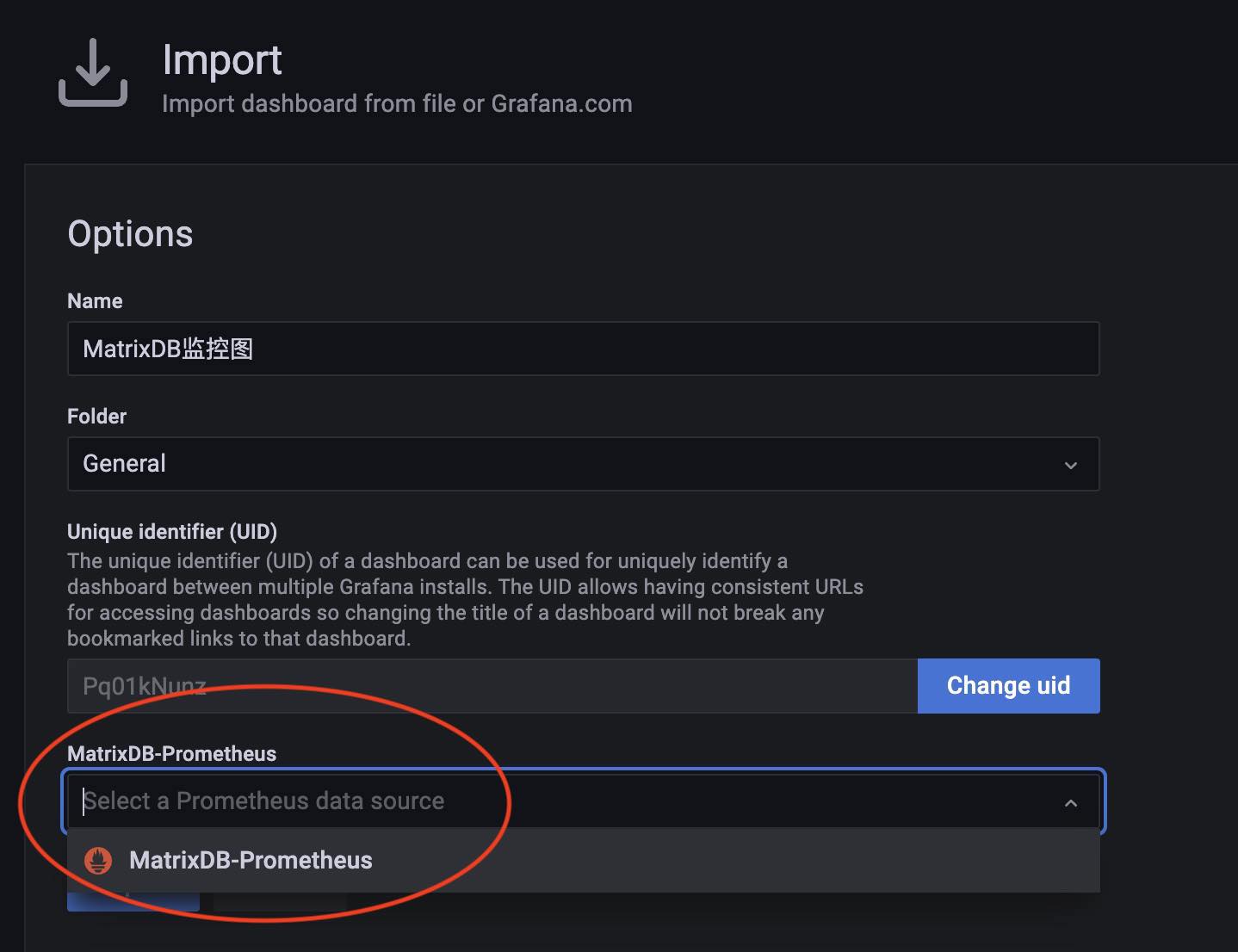
Then, you can see the panel that just loaded in the panel list.
For detailed interpretation of panel monitoring, please refer to YMatrix Monitoring Parameter Interpretation
The above steps demonstrate how to add the Prometheus Dashboard for YMatrix. The following describes how to deploy node_exporter's Dashboard as well.
Loading node_exporter Dashboard: Because the corresponding Dashboard has been published in the official website of Grafana, just fill in the ID to load.
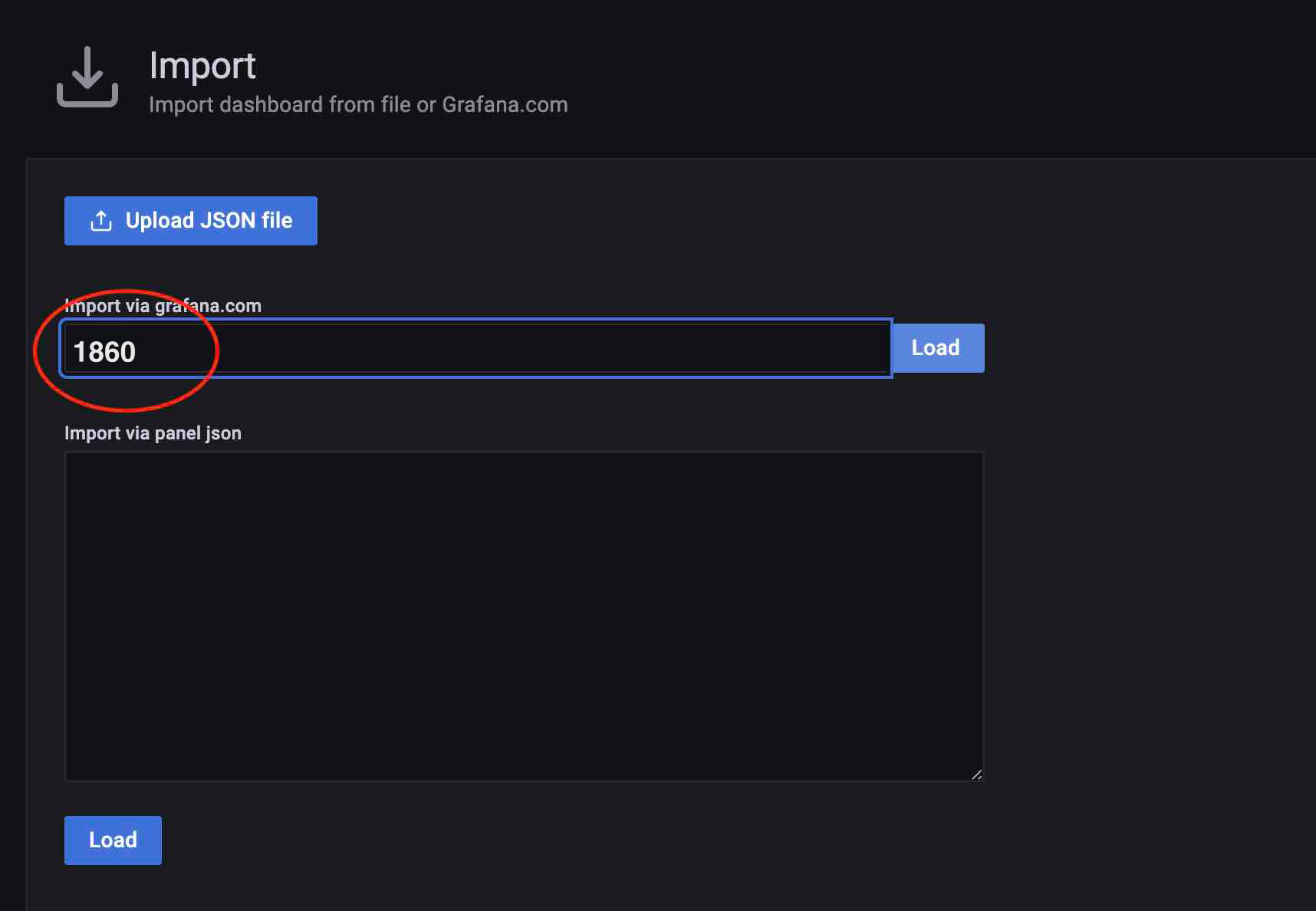
During the loading process, you need to select the data source and select the MatrixDB-Prometheus source you just added. If node_exporter has a separate Prometheus cluster, you need to add a data source separately.

After cluster state acquisition is activated, each host will run the acquisition service and the relevant logs are saved in the /var/log/matrixdb directory.
If you restart YMatrix, or restart the server and then start YMatrix, the YMatrix exporter will also start automatically without manual intervention.
To close the matrixdb exporter service, connect to the matrixmgr database and execute the mxmgr_remove_exporter command:
psql -d matrixmgr
matrixmgr=# SELECT mxmgr_remove_exporter();To activate data acquisition again, connect to the matrixmgr database and execute the mxmgr_deploy_exporter command:
matrixmgr=# SELECT mxmgr_deploy_exporter();Note! mxmgr_remove_exporter will only close matrixdb exporter, node_exporter, Grafana, and Prometheus will need to be closed separately.
The old monitoring system has been upgraded to the new monitoring that connects to the Prometheus ecosystem.
First complete the Prometheus installation and deployment and upgrade Grafana to the latest version:
# Turn off the old monitor first
psql -d matrixmgr
matrixmgr=# SELECT mxmgr_remove_all('local');
# Initialize and start a new monitoring
matrixmgr=# SELECT mxmgr_init_exporter();Note! New and old monitoring can also be deployed at the same time, that is, new monitoring can be started without shutting down the old monitoring, but it is a bit redundant.
As a high-performance data access component, MatrixGate is also compatible with the Prometheus monitoring ecosystem. Normally, MatrixDB monitoring data and MatrixGate monitoring data are stored in the same Prometheus system, and the following operation steps are also assumptions.
Like YMatrix exporter, deploying gate exporter also requires creating a matrixmgr database with matrixts and matrixmgr extensions. Here it is assumed that it has been created.
Then call mxmgr_init_gate_exporter to initialize and start:
matrixmgr=# SELECT mxmgr_init_gate_exporter();After success, you can observe that a new pattern called "gate_exporter" appears under the matrixmgr database. Tables and views in this mode contains monitoring and configuration information of gate. Do not change the definitions and contents of these tables and views by yourself.
This command starts gate_exporter on the Master host.
To close gate_exporter, execute mxmgr_remove_gate_exporter:
matrixmgr=# SELECT mxmgr_remove_gate_exporter();If you start again, execute mxmgr_deploy_gate_exporter:
matrixmgr=# SELECT mxmgr_deploy_gate_exporter();Just like loading the YMatrix monitoring panel, the panel file of MatrixGate is in $GPHOME/share/doc/postgresql/extension/MxgateDashboard.json, and you can load the file.
For detailed interpretation of panel monitoring, please refer to MatrixGate Monitoring Parameter Interpretation